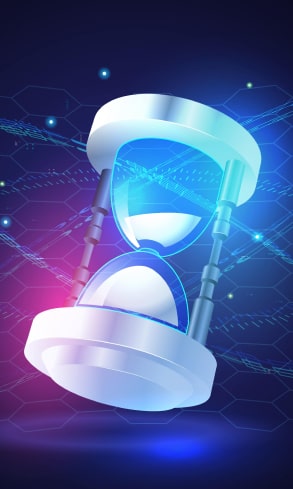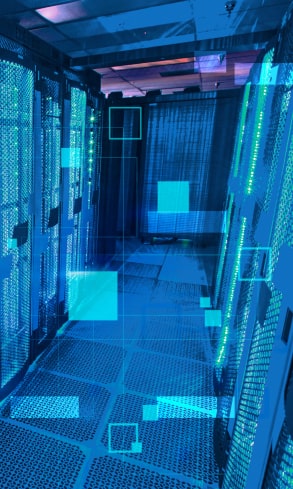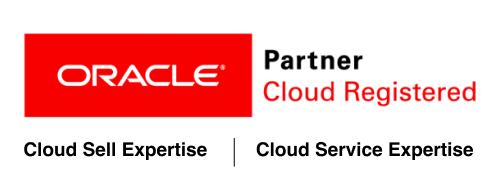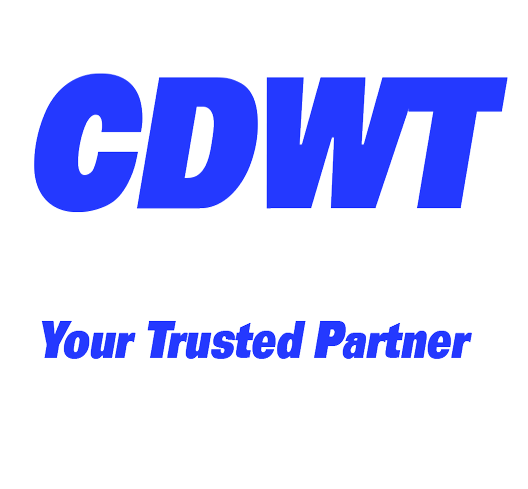Where Everything Belongs: Welcome the Giant Enterprise Application
The distinction is direct and unambiguous. While the other three worldwide giants in the hyperscaler cloud area began with renowned consumer-facing technologies that changed the computer and internet industries, Oracle arguably accomplished a comparable success for the corporate vertical. Oracle’s entry into the cloud market with Oracle Cloud Infrastructure (OCI) was sure to shake up the corporate modernization industry, given the company’s global reputation for its business solutions suite, which includes databases, ERP, CRM, EPM, and other products. And, so it did. Today, OCI remains a crucial option for corporations migrating and transforming their on-premises applications, businesses seeking to establish a harmonious cloud environment for their third-party and custom-built applications, and ISVs offering innovative solutions to millions of enterprises worldwide. Business application creation, re-architecture or modernization, multi-ecosystem connection, and delivery to end users have never been more agile and scalable. Oracle’s increasing emphasis on creating application environments that operate smoothly across the OCI, private clouds, hybrid ecosystems, and other multiple cloud solutions further sweetens the deal for end-user organisations and cloud service providers.
63%
Automation
Application Modernization
Why undertake an Oracle Cloud Journey for Application Modernization Strategies: Advanced Ecosystems, Multi-cloud Capabilities, Automation, and Efficiencies
- Escalating Expenses For Software Updates
- Insufficient universality
- Reduced application performance, scalability, and adaptability
- Disruptions to operations, endangering business as usual
- Delays in Application Problem Resolution
- Lack of end-to-end knowledge in application administration
- Multiple application-related dangers
- Compliance and regulatory difficulties
- Disaster Restoration failures and improper management of the infrastructure
- Limited Capabilities for digital transformation. Generation of a flood of data with limited analytical skills


Escalating Expenses For Software Updates


Insufficient Universality


Reduced application performance, scalability, and adaptability


Disruptions to operations, endangering business as usual


Delays in Application Problem Resolution


Lack of end-to-end knowledge in application administration


Multiple application-related dangers


Compliance and regulatory difficulties


Disaster Restoration failures and improper management of the infrastructure


Limited Capabilities for digital transformation. Generation of a flood of data with limited analytical skills
Boost your Application Modernization Services on the Oracle Cloud with CDWT: Automated, AIOps-powered Solutions.
The world of cloud managed services is undergoing a rapid transformation. With increasing customer expectations, high-fidelity digital experiences, and large-scale datasets, businesses can no longer satisfy their infra needs from the cloud while controlling everything securely. Consequently, businesses are increasingly leaning towards MSPs such as CDWT that provide end-to-end ITOps management in the cloud, from the infra to the application layer, under a single SLA.
In this setting, application modernisation transforms from a simple request to a key piece of the comprehensive cloud transition jigsaw. CDWT, an AIOps-driven provider of end-to-end cloud migration, modernization, and administration services, ensures high-quality application modernization experiences at maximum availability, exceptional agility, and greater scalability with no interruption to business as usual. Integrate cutting-edge automation solutions with state-of-the-art security and process analytics, intelligence with CDWT to guarantee hyper-performance, creative results at the most cost-effective rates.
CDWT with Oracle: Big Concepts and Big Changes
In 2021, organisations will increasingly use Oracle Cloud as a result of its strong competitive advantage and superior user experience. To facilitate organisations’ smooth transition with the appropriate relationship. Oracle acknowledges partners that exhibit the requisite competence for success. With its full stack Oracle transformation suite and demonstrated delivery quality, CDWT has received the renowned Cloud Sell and Cloud Service Expertise certification and become a trusted worldwide Oracle Cloud Transformation Partner. Learn how CDWT acquired its Oracle Cloud Sell and Cloud Service Expertise in the next section.


Which 6 R Application Modernization Framework on Oracle Cloud Model Best Suits Your Organization?
Cloud-based application modernisation is an absolute need for revitalising IT processes and expanding delivery and service experiences. As a result of the absence of app modernization on cloud expertise, however, the majority of organisations just lift and transfer their apps, resulting in severely constrained and decreased performance.
The comprehensive cloud strategy, development, full-stack architecture, maintenance, and security engineers at CDWT function as an extended team to modernise a client’s whole application environment on the Oracle Cloud. Using the sophisticated 6 R Methodology, rehash and relaunch your apps to unleash more agility, increased performance, and end-user excellence enabled by a smart OCI backend.
REPURCHASE (DROP & SHOP)
This phase entails minimum changes to transition to a cloud-based system. The business abandons its on-premises software licence and migrates to the cloud-based version of the same software, effectively repurchasing the licence.







REHOST (LIFT & SHIFT)
Identify the apps and current workloads that need to be lifted and shifted to the cloud environment. The migration utilises cutting-edge native tools and support services to migrate the current on-premises application stack to the cloud.







REFACTORY/ REARCHITECT
This phase or approach involves the most effort and expenses as the existing on-prem applications, databases, and workloads are significantly over-hauled, often at the codebase levels, to move them to the cloud. In this phase, it is usual practise to divide monolithic structures into microservice designs for improved cloud performance. As the programme is modified to fit the cloud's natural environment, such an approach guarantees that the greatest capabilities of the cloud are used.







RETIRE
This method includes the identification of duplicate apps or platforms that might result in needless cloud load/overprovisioning, hence driving up operating expenses. Under such conditions, businesses may decide to retire and replace the application with a cloud-friendly one.







RETIRE
Businesses may choose to keep certain old on-premises apps operational if they give high performance and are related to crucial initiatives. In such a scenario, the remaining core systems may function in the cloud, while the maintained on-premises applications may work independently or in tandem with the cloud applications through APIs.







- Current and Contemporary Applications OCI Migration and Cost Management
- Management of Industry Applications on OCI
- Oracle Database Administration and Enterprise Database Management on Oracle Cloud
- Integration of Applications with OCI
- OCI-powered DevOps
- Microservices using OCI
Utilize CDWT's industry-leading Migration Factory methodology to simplify your enterprise and SaaS application workloads and resources, as well as the migration of PaaS platforms on OCI. With this assembly-line methodology implemented by cutting-edge automation processes and administrative experts, you can achieve a high ROI, rapidly deploy/provision cloud infrastructure, simplify on-demand provisioning of cloud stacks, and integrate with your existing ITSM processes in a seamless manner. Utilize OCI-native solutions to migrate.NET, PHP,.NET Core, Node.js, Java, Python-based apps, Linux and Windows app clusters and containers to Oracle cloud in a series of easy, automated stages. Implement a lean application lifecycle environment across the enterprise, including CI-CD integrations, DevOps and DevSecOps enhancements, and SysOps procedures. Obtain industry-leading application performance, hyper agility, operational scalability, and continuous availability.
CDWT helps integrate, simplify, and unleash hyper performance for critical industrial and SaaS applications, PaaS platforms in banking, healthcare, e-commerce, corporate operations, and information management, among other industries. Oracle Cloud Platform offers comprehensive modernization and installation assistance for ERP, CRM, EPM, and other business suite apps. Integrate with virtualized networks, incorporate containerization-serverless-microservice capabilities, and provide enterprise-level security and compliance. Obtain a high level of availability of 99.95% and grow applications internationally without interruption.
Oracle Cloud makes it simple to host, manage, administer, and protect databases for mission-critical corporate ERP, CRM, CMS, and associated applications including on-premise, Edge, and IoT settings. CDWT supports SQL OpenSource Database programmes like MySQL, MariaDB, and PostgreSQL; SQL commercial database systems like IBM DB2, Oracle, SQL Server, SAP ASE, and SAP HANA; and NoSQL Open source database apps like MongoDB, Cassandra, CouchDB, redis, etc. Fully administered cloud-based databases provide excellent data availability, scalability, and quick access to cutting-edge analytic tools. Integrate superior security solutions and cloud-based firewalls to ensure world-class data security.
Integrity of apps and their backend architectures and databases is a prerequisite for achieving frontend operations that are seamless across various IT environments. Using event-driven architectures and multipurpose APIs, fortify application integrity after programmes have been migrated and updated to the Oracle cloud. The latter facilitates the effortless synchronisation of disparate applications with other databases, applications, systems, platforms, and backend infrastructure as needed. In addition, improve remote workflow management by implementing flexible, customised, and fully managed remote development environments, remote workforce apps, and more.
Modernizing your DevOps infrastructure is essential for accelerating the product delivery lifecycle. Embrace an automated, agile, and highly scalable ecosystem across the Software Development Lifecycle with DevOps environments reinforced by Oracle Cloud tools and services. Align your DevOps environment across diverse application landscapes by integrating essential technologies like as containerization using Docker and Kubernetes for Oracle Cloud, orchestration, and Infrastructure as a Code. Utilize CDWT's main toolkit experience in platform architectures, configuration, CI/CD pipeline, coding, systems development, automation, and testing to enhance your cloud-based DevOps and application operations. With the OCI advantage, construct apps on the language of choice -.NET, PHP,.NET Core, Node.js, Java, and Python; bring in containers and frameworks-libraries of choice; increase developer productivity; and simplify CI/CD pipelines.
Monolithic architectures, which have powered legacy systems and software for decades, are increasingly being replaced. Due to their unsurpassed rigidity, conventional architectures make it difficult for engineers to detect code faults or implement significant changes. With the cloud revolution driving updated development environments, deconstruct historical systems and create new software in a powerfully modularized manner: abstracted components devoted to executing important functions, woven into a central whole with the aid of innovative tools. Such modularized, self-sufficient software parts make it simple to identify faults, push updates, and automate the delivery process for quicker provisioning and operation in live situations. This also helps with load distribution and traffic management. Individual server functions executing each microservice segment may be individually scaled up or down depending on traffic needs without impacting the overall performance of the programme, hence eliminating server overprovisioning and lowering costs.
- OCI Serverless Architecture
- Security and Event Management for Application on OCI
- Compliant Application Architecture and Cloud Management on Open Cloud Infrastructure
- Planning for DR and Business Continuity on OCI
- Intelligence and Automation on OCI
If microservices are believed to revolutionise how applications and software are produced or constructed, Serverless or Functions-as-a-Service assures that the same are executed in an agile and transformational manner on the cloud. Once the produced code is transferred to the cloud using this method, the microservice modules or functions are given separate servers/fire only when the specific function is invoked, hence eliminating idle running or overprovisioning. Under this design, the company just pushes the modules to the cloud environment, and the cloud environment handles the rest, including assigning servers to execute the modules. Adopt the Functions-as-a-Service methodology for the app modernization process, covering frontend applications, middleware, operating systems, libraries, frameworks, APIs, and virtual machines. Integrate microservices design with containerization in order to maximise FaaS on OCI. Using serverless event processing, design and construct the architecture of an event-driven application that consumes data streams, processes them in the cloud, and synchronises the results back to back-end databases with zero data loss, zero disturbance, and ultra-low latency. Leverage Oracle Cloud Functions to allow serverless operations.
With a multitude of cloud-native technologies, over 40 Security Controls, dedicated Security Operations Center managed services, and cybersecurity specialists, you can safeguard your application assets end-to-end. Utilize the sophisticated Managed Detection and Response platform for automated management of threats and malware. Reduce Mean Time to Detect and Response across all touchpoints, provide comprehensive endpoint protection, and use sophisticated data analytics to acquire distinctive security management insights. Utilize cloud-native solutions for round-the-clock monitoring, identity and access control, firewall management, API security, app database threat management, and network monitoring. Utilize the game-changing preventative maintenance capabilities of CDWT's SHOP (Self-Healing Operations Platform).
Obtain a globally compliant application architecture with CDWT's application managed services for Oracle Cloud, which includes strict adherence to local-national-global laws such as PCI-DSS, NESA, SAMA, GDPR, FedRamp, MSA, IRAP, GxP, CSA, OJK, MEITI, and RBI. The worldwide standards include ISO 27001, ISO 27017, ISO 27018, ISO 20000, ISO 22301, SOC1, and SOC2 certifications. Easily comply with data residency and local requirements with secure in-country hosting. Adopt rigorous compliance checks for your application's assets. Never again let compliance difficulties to impede the functionality of your applications and the advancement of your firm.
Streamlined, integrated Disaster Recovery tools and solutions to assist organisations in achieving near-zero operational outages. Advanced automated backup, recovery, and disaster management systems with high RPO/RTO criteria for your applications and associated assets. Build your bespoke DR plan on the Oracle cloud using DRaaS architecture, adopt customised solutions for business operations, simplify the protection of data storage platforms, and choose periodic DR drills for maximum effect. Utilize geo-native OCI hosting for the highest levels of application availability, scalability, performance agility, and continuity.
With CDWT's turnkey hyperautomation solution, you can uncover the appropriate business processes for automation, collect data from even unstructured sources, automate difficult operations, and strategically expand automation throughout your organisation, among other capabilities. With their experience in process analytics and automation, our certified automation specialists have assisted a variety of firms in automating essential operations and transforming their businesses. Utilize proprietary cutting-edge AI, Big Data, Analytics, RPA, and automation technologies and solutions to modernise application processes, workflows, and data, and to adopt intelligent, data-driven decision-making capabilities. Choose from hundreds of powerful cloud-native tools and business apps powered by the Oracle cloud to simplify asset management, workflows, compliance, governance, and more. Unlock cutting-edge innovation capabilities with Oracle's cloud-based machine learning and artificial intelligence (AI) services. The totally updated development platform from OCI offers automatic logging, scalability and high availability, extensive telemetry, proactive alerts, and complete insight into applications and underlying systems. Streamline manual redundancies and automate repetitive procedures to optimise the ROI and resiliency of corporate systems.
In CDWT's Application Migration and Modernization Factory Methodology
PHASE 1: ASSESSEMENT
-
Exploration Workshops
-
Industry- and region-specific guidelines
-
Examining applications at risk and loopholes
-
Risk and security evaluation using prioritisation
-
Cost-Benefit Analysis with Costs for Risk Mitigation
-
CDWT Endorsement Priorities
-
Priority recommendations for application modernisation
-
Stakeholder buy-in and finances
PHASE 2: PLAN
-
Creating a plan for modernising
-
Approaches to app migration and transformation
-
Migration plan and target deployment environments
-
Plans for Development and Testing
-
Document Impact Plan and Document Project Milestones
-
Budgeting
-
Acceptance by stakeholders and funding release
PHASE 3: EXECUTION
-
Project Launch
-
Configure Cloud Platforms
-
Quality Control
-
Checks for Safety and Authorization
-
Health and Functionality Verification
-
Status Report to Migration Teams
-
ROI Validation
-
Deactivate Technologies
-
Project Acceptance
Why Implement CDWT’s Application Migration and Modernization Factory?
Why Partner with CDWT for Your Oracle Cloud Application Modernization?
Twelve or more years as one of the most trusted Managed AWS cloud services and Application Modernization providers in APAC, MEA, and the Americas.
As a committed AWS Partner, the world's leading Application-focused, high-end managed services provider with AIOps-driven AWS Managed Operations.
24/7 Support supported by more than 2,000 cloud-certified professionals (including Kubernetes and DevOps specialists) who are proficient with ITIL, ITSM, and CoBIT delivery processes, and 26 Centers of Excellence.
Zero Friction AWS Application Modernization Model with industry-leading Application Migration Factory methodology, 25000+ migrated Apps, and Databases.
4000+ business clients, including 60 of the Fortune 500 and 5 of the top 20 global banks
The successful implementation of Public, Private, Hybrid, Multi, and Community AWS Cloud systems in 26 countries globally.
99.95% application availability, hyper-scalability, industry-leading uptime, and 50,000+ transactions per hour without failure.
Proven knowledge administering over 10,000 SAP instances and over 2,300 TB of HANA Database on AWS Cloud.
Proven knowledge with IBM, Oracle, OpenText, and Infosys, as well as cloud-native enterprise application management, including SaaS, PaaS, and IaaS transition on AWS Cloud.
Host and deploy apps in the Amazon Web Services (AWS) region of your choosing to ensure high availability and minimal downtime.
Proven knowledge in end-to-end Application Modernization with a focus on development, engineering, maintenance, administration, and security monitoring.
Dedicated DR options on AWS for diverse, complex application environments, including automated recovery-backup, failback-failover techniques.
Expertise in Dedicated Application Managed Security Services on AWS, 40+ Security Controls, and Dedicated SOCs.
CDWT's automation solutions, including Self-healing Operations, Automation Delivery platforms, and RPA solutions, include Self-healing Operations.
Expertise with hundreds of AWS cloud-native apps and technologies, best handled in accordance with customised business processes
Cost-effective Pay-per-use model under single SLA
1 Billion+ Hours of Managed Fail-safe Application Hosting managing 40,000+ VMs
Strict compliance with regulatory and country-specific data residency requirements
Oracle Cloud Services – FAQ’s
Legacy programmes are often hardwired to certain systems, kernels, or backends; hence, merely lifting and shifting them to the cloud results in poor performance.
Modernizing programmes should be at the top of corporate owners' to-do lists for maximising the benefits of sophisticated cloud architecture and ensuring optimal workload performance.
The first strategy is a straightforward migration of on-premises software to its cloud-based counterpart, which entails changing licencing.
Rehosting entails moving apps as-is to the cloud environment, while Replatforming entails the same process but with a few adjustments for enhanced cloud performance.
Refactoring or re-architecting programmes entails breaking down monolithic structures into smaller modules or microservices and rebuilding codebases in order to not only move them to the cloud but also make them cloud-ready end-to-end.
Retire and Retain refers to the replacement of obsolete, superfluous software and the retention of current, mission-critical on-premises programmes, respectively.
Consequently, in order to properly modernise apps, businesses must remodel app databases, fine-tune database management systems, adjust application networks-protocols-libraries, customise servers, connect with DevOps, and simplify app security.
Firms may do the aforementioned without interruption by using the services of application modernization partners like CDWT or native cloud-based technologies.




